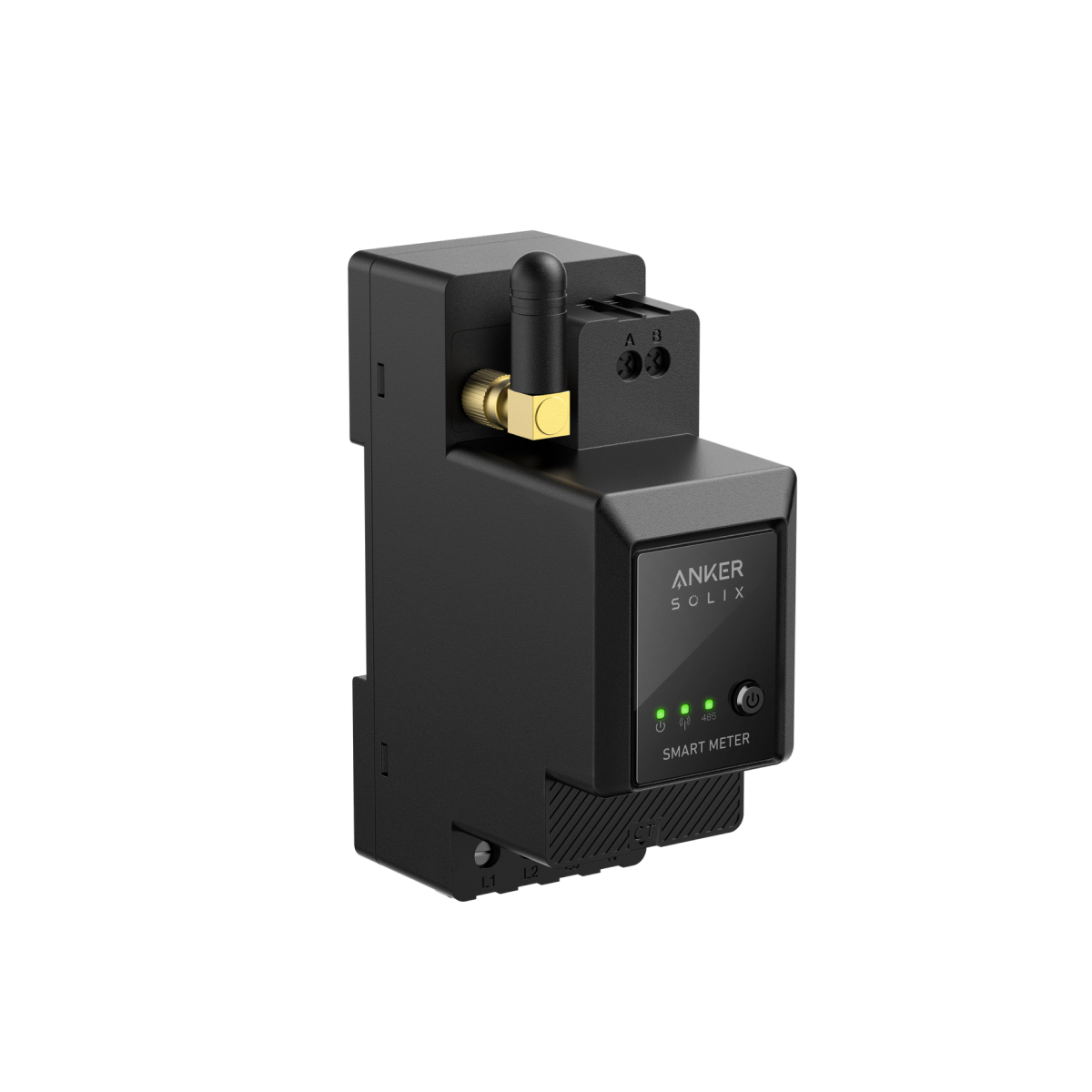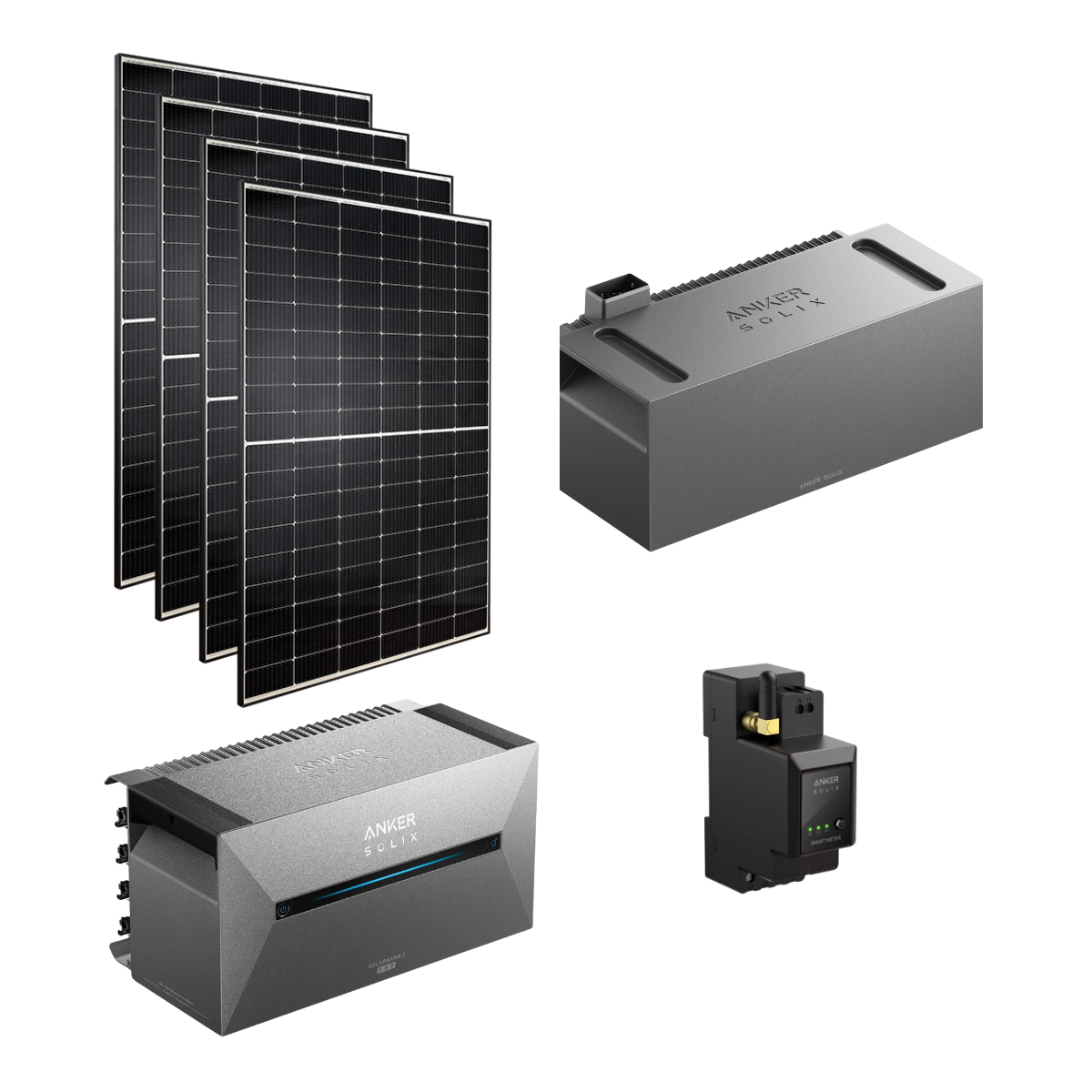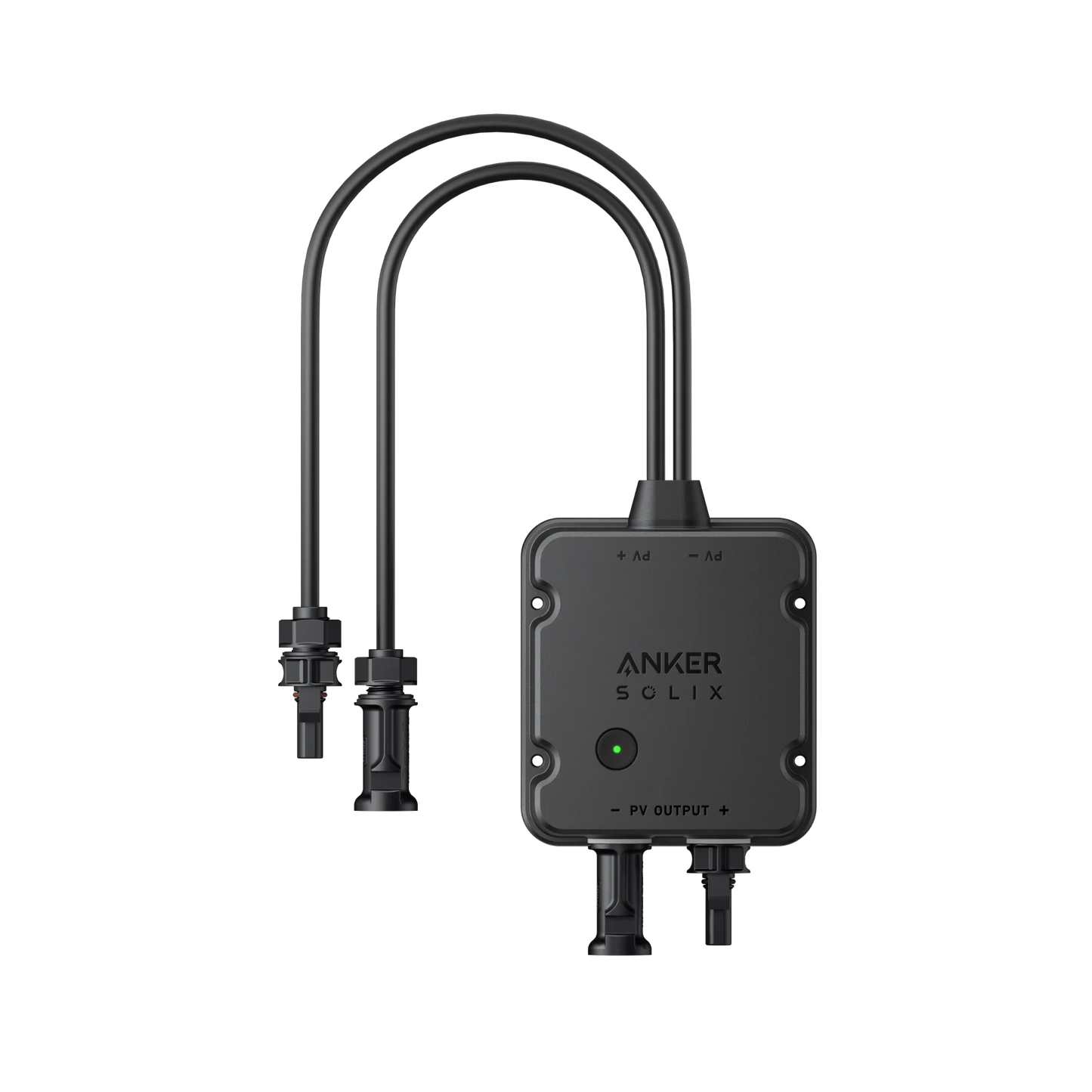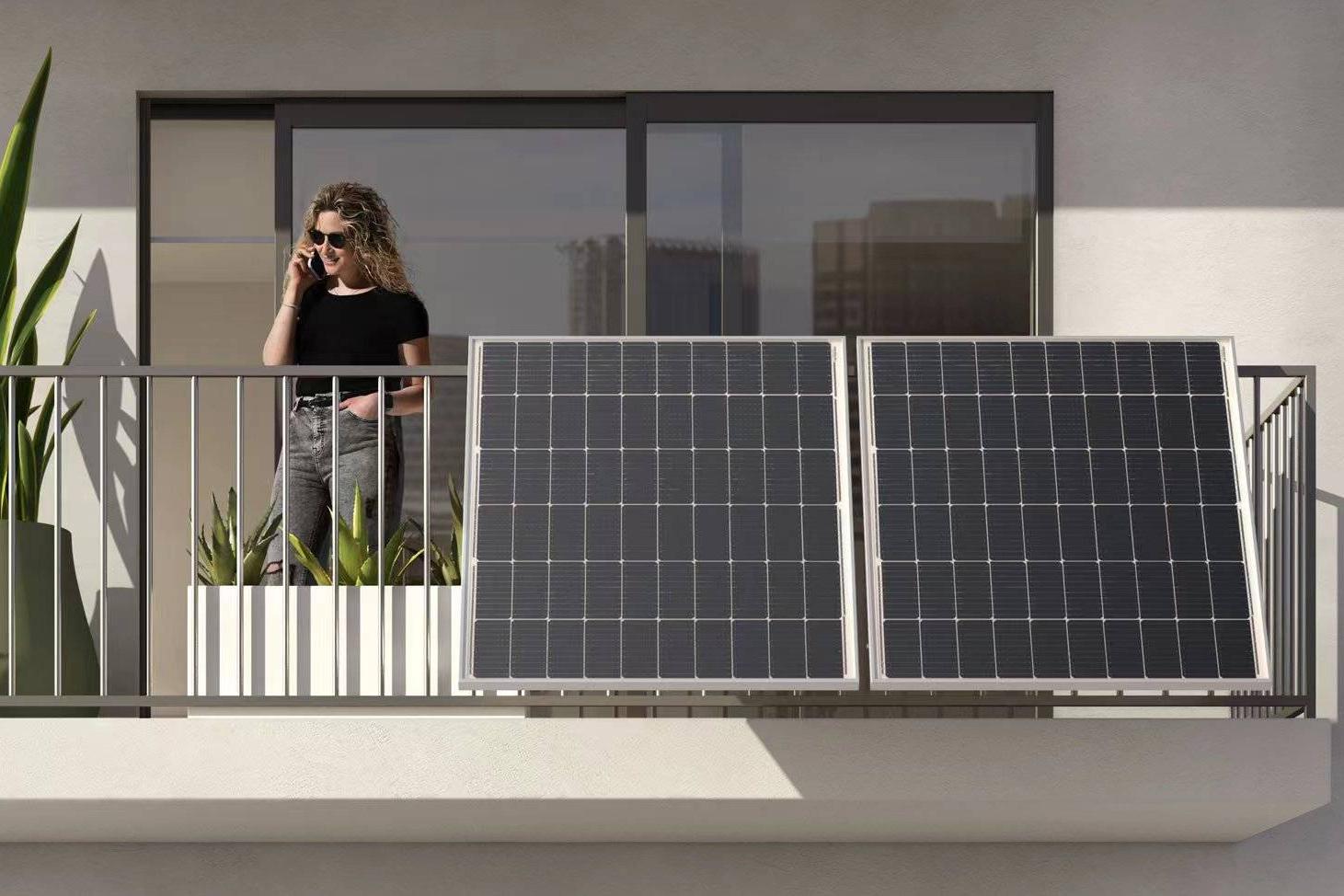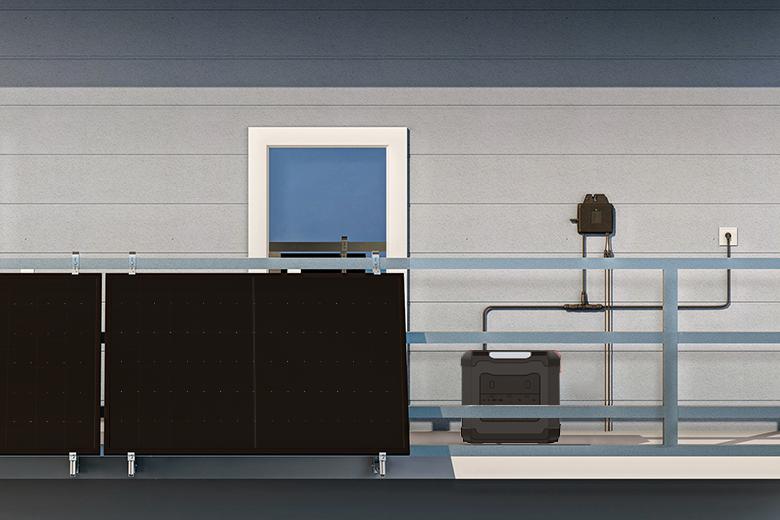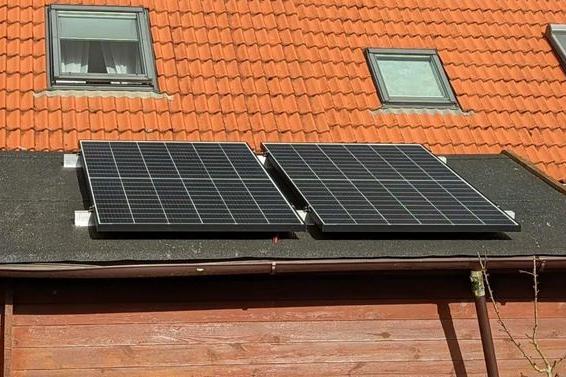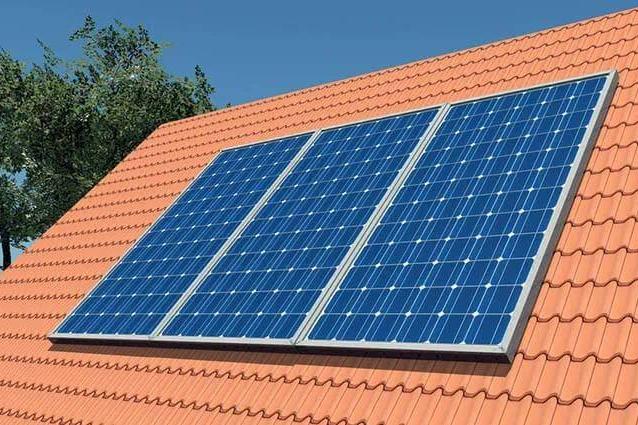Blog & News
Calculate photovoltaic power: kWh & kWp + optimal size
There's no question: photovoltaics is the future. With a photovoltaic system, you'll be free from rising electricity prices and contribute to climate protection. If you're interested in this topic, you're probably wondering: What is the optimal power output of a system? And how do you calculate this? A simple formula can be used to determine photovoltaic power output.
Which key figures describe the performance of a photovoltaic system?
From kilowatt hours to kilowatt peak – to calculate the optimal photovoltaic power, we first need to clarify a few terms:
kWh – The kilowatt hour
The abbreviation kWh stands for one kilowatt hour and means that one kilowatt of energy in one hour The unit kWh is therefore used as a measure for the amount of electricity generated or the electricity production of a photovoltaic system. One kWh corresponds to the 1,000 times one simple watt hour (Wh).
To help you better understand this, here are three Examples from everyday life: With the energy of one kWh you can power approximately one
- Run a 60-degree wash cycle,
- Working on a laptop for 50 hours,
- shave 2,800 times electrically.
kWp – The kilowatt peak
The kilowatt peak, also rated power is an important unit of measurement in the photovoltaic sector. The kWp describes the Maximum power in kilowatts (kW) that a photovoltaic system can produce. This value allows for the comparability of PV systems. To provide accurate results, manufacturers must ensure that the photovoltaic systems are Standard terms and conditions be tested.
The performance of photovoltaic systems depends on many factors such as weather, solar radiation and location. The term kWp reflects the power output under ideal (Laboratory) conditions These are almost never achieved in reality, which is why PV systems always achieve fluctuating performance.
The ideal conditions are also known as Standard test conditions (STC stands for Standard Test Conditions). These are uniform conditions under which the performance of photovoltaic modules is tested. solar modules from different manufacturers. The STC conditions are:
- a solar radiation of 1,000 watts per m²
- an air mass (AM) of 1.5
- a cell temperature of 25 °C
And this is how you calculate kWp in kWh to:
One kWp corresponds to 1,000 kWh of electricity generation per year. 1 kWp photovoltaic system in Germany produces an average 1,000 kWh per year. A PV system with 7 kWp can therefore achieve a yield of 7,000 kWh.
The values vary depending on the location. You can expect a higher yield in southern Germany than in the far north, as global radiation is higher there. The following table provides a rough estimate.
| Federal State | Specific yield |
| Baden-Württemberg | 1,070 kWh/kWp |
| Bavaria | 1,060 kWh/kWp |
| Berlin | 910 kWh/kWp |
| Brandenburg | 990 kWh/kWp |
| Bremen | 930 kWh/kWp |
| Hamburg | 959 kWh/kWp |
| Hesse | 1,018 kWh/kWp |
| Mecklenburg-Western Pomerania | 1,014 kWh/kWp |
| Lower Saxony | 985 kWh/kWp |
| North Rhine-Westphalia | 987 kWh/kWp |
| Rhineland-Palatinate | 1,037 kWh/kWp |
| Saarland | 1,063 kWh/kWp |
| Saxony | 1,035 kWh/kWp |
| Saxony-Anhalt | 1,004 kWh/kWp |
| Schleswig-Holstein | 1,002 kWh/kWp |
| Thuringia | 1,021 kWh/kWp |
What does instantaneous power mean for PV systems?
The instantaneous power describes the power generated by a photovoltaic system at a specific time. To determine this value, three parameters required: the nominal power, the number of PV modules and the current strength of the solar radiation.
What does specific power of solar systems mean?
The specific power relates the electricity production of the solar system in kilowatt hours (kWh) to the nominal power of the system (kWp). Usually, the Period of one year considered. The specific performance can be used to compare different system sizes.
Invoice:
- specific power: kWh (annual electricity production) / kWp (nominal power)
- Example: 7000 kWh (annual electricity production) / 7 kWp (nominal power)
- specific power = 1000 kWh / kWp
What is the average output of a photovoltaic system?
The average power of a photovoltaic system is Single-family and multi-family houses approximately 5 to 10 kWpThis corresponds to electricity production from 800 to 1,200 kWh per kilowatt peak. How much solar power your photovoltaic system produces depends on various factors, such as the location of the photovoltaic system and the power and orientation of the PV modules.
Calculating optimal photovoltaic performance: How it works
To calculate the optimal photovoltaic performance, you need to know your own electricity consumption. A four-person household consumes on average around 4,000 kWh per year. With an average PV yield of 1,000 kWh per kWp, this corresponds to a photovoltaic system with 4 to 5 kilowatt peak power.
Size of the photovoltaic system: Example
In our example, we assume an annual electricity consumption of 4,000 kWh. You can determine this average value from your electricity bills from recent years. The house's location receives an average solar irradiation of 1,000 kWh per kWp.
You can find the radiation output for your location on the radiation map of the German Weather Service.
For the system to be economically viable, as much solar power as possible should be consumed internally. Feeding it into the public grid is no longer worthwhile due to the reduced feed-in tariff.
For a PV system with 4 kWp you need 12 to 13 PV modules with a performance of just under 320 watt peak. The bill for this:
4,000 kW / 320 Wp = 12.5 solar modules = 13 solar modules
A solar module typically measures 1.7 m². With 13 modules, this would correspond to a roof area of 22.10 m²:
13 solar modules * 1.7 m² = 22.1 m²
A free area of this size is usually available on single-family homes.
Which factors influence the performance of photovoltaics?
How efficiently a solar system generates energy depends on various factors. Below, we'll examine these factors in more detail.
Performance of the solar modules
The performance of the solar modules is an important factor for the Photovoltaic yieldA 300 Wp solar module produces 300 W of electricity at 1,000 W of solar irradiation. This output is largely determined by the size of the solar module and the type of solar cells. Monocrystalline solar cells have the highest efficiency, followed by polycrystalline and finally thin-film solar cells.
How many kilowatt peak per m² are possible?
Monocrystalline solar cells with an efficiency of 18 to 26% have an output of approximately 350 Wp in a standard module. With a module size of 1700 mm x 1000 mm, or 1.7 m², approximately 0.2 kilowatt peak per m² is possible.
The size of solar modules is not uniform. However, most manufacturers use 60 standard cells or 120 half cells per module. The output in kilowatt peak per m² therefore varies between different module types.
| Module type | Length x Width | kWp per m² |
| 48 cells | 1350mm x 1000mm | 0,185 |
| 60 cells | 1650mm x 1000mm | 0,21 |
| 72 cells | 2000mm x 1000mm | 0,205 |
| 120 half-cells | 1700mm x 1000mm | 0,208 |
Weather and global radiation
The Global radiation is higher in the south than in the north. The location of the photovoltaic system therefore also plays an important role in planning the size of the system. If you want to achieve the same electricity yield in Hamburg as in Munich, you will need more or more powerful PV modules.
The weather also influences the performance of the system. Photovoltaics also works in the shadeHowever, if it is cloudy, less electricity is produced than when the sun is shining. But be careful: if the temperature is too high, the system also loses power. As soon as the solar cells reach a higher temperature than 25 °C in the STC conditions, performance decreases by 0.3 to 0.4% per degree.
On very hot days, solar modules can heat up to 65 °C. This would correspond to a power loss of 10.5 to 14%. In Germany, from May to July The highest energy yields are generated with photovoltaics. It is often too hot in August.
The following table shows roughly the global radiation and the associated power depending on the weather situation:
| Weather | Global radiation | Performance |
| Sunny | 1000 W/m² | 1000 watts |
| Slightly cloudy | 400 W/m² | 400 watts |
| Very cloudy | 150 W/m² | 150 watts |
| Rainy | 50 W/m² | 50 watts |
Alignment of the solar modules
The Alignment of the solar modules also has a significant impact on performance. In Germany, the best yields are achieved when modules are aligned directly south Deviations according to South-East/West However, they also produce very good yields. With a completely east-west orientation, yields are somewhat lower. However, both sides of the roof can be covered with photovoltaic modules.
One East-west orientation It's advantageous if you use most of your solar power in the morning and evening—that is, when the sun shines on both surfaces. This allows you to increase your self-consumption and require less electricity to be fed into the grid.
Roof pitch
In Germany, a south-facing roof requires a Tilt angle between 30 and 45 degrees Ideal. For an east-west orientation, the modules should have a flatter tilt angle, as the sun is also lower.
The following table shows the dependence of orientation and inclination.
Shading
Permanent or partial shading of individual PV modules should be avoided at all costs. This leads to significantly lower PV yields. Therefore, please consider the following when planning your system: possible shading from neighboring buildings, trees, or self-shading from dormers and chimneys. If shadows cannot be avoided, PV optimizers can provide a remedy.
Also keep in mind that the sun moves not only throughout the day, but throughout the year. In winter, it is much lower in the sky than in summer. Therefore, the shadow cast is also considerably longer.
Modern solar modules, however, cope very well with temporary shading thanks to bypass diodes. These simply redirect the current from the shaded part of the solar cells, thereby less power loss arise.
Photovoltaic output per year
The average photovoltaic power in Germany per year is 1,000 kWh per installed kWp capacity. A 6 kWp system therefore generates 6,000 kWh of solar power per year. The yield in southern Germany tends to exceed 1,000 kWh. In the north, the solar system's output is lower.
In our table you can see the average Yield per year for different cities read.
| City | Yield in kWh per kWp |
| Freiburg | 1.048 |
| Munich | 1.041 |
| augsburg | 1.029 |
| Stuttgart | 1.025 |
| Würzburg | 1.001 |
| Frankfurt | 980 |
| Nuremberg | 975 |
| Mainz | 973 |
| Erfurt | 970 |
| Leipzig | 955 |
| Aachen | 946 |
| Rostock | 945 |
| Dusseldorf | 907 |
| Hanover | 901 |
| Kiel | 895 |
| Bielefeld | 880 |
| Bremen Airport | 879 |
Photovoltaic output throughout the year
The photovoltaic output over the course of the year is Global radiation In Germany, the radiation from April to August The highest solar yield is the correspondingly high. Good yields can still be achieved in March and September. However, the electricity yield is significantly lower in winter.
In the following table you can see the average photovoltaic yield per month in Germany.
| Period | Possible photovoltaic yield |
| January | 20.5 kWh/kWp |
| February | 31.6 kWh/kWp |
| March | 80.3 kWh/kWp |
| April | 138.5 kWh/kWp |
| May | 146.0 kWh/kWp |
| June | 139.3 kWh/kWp |
| July | 146.0 kWh/kWp |
| August | 124.0 kWh/kWp |
| September | 93.16 kWh/kWp |
| October | 41.0 kWh/kWp |
| November | 26.5 kWh/kWp |
| December | 13.7 kWh/kWp |
| Full year | 1000.8 kWh/kWp |
FAQ
What is the photovoltaic output per square meter?
The photovoltaic power per m² is on average just under 0.2 kWpThis allows for an annual output of 200 watts. Generally, approximately 300 to 350 watts of photovoltaic power are possible per 1.5 m². Deviations from this value are possible depending on the location and type of photovoltaic system.
What is the photovoltaic power per module?
The photovoltaic power per module of modern modules is between 300 and 500 WpPhotovoltaic systems on single-family and multi-family homes typically use PV modules with a power output of 300 Wp. These are cheaper than high-performance modules with 400 Wp or more.
How much electricity does photovoltaics generate per day?
On average, the photovoltaic power per day is 2.7 kWh per kWp. This is the Total annual value, since the actual daily electricity generation from photovoltaics depends on the season and weather. An annual value is therefore more meaningful.
How much power does photovoltaics produce in winter?
The photovoltaic power in winter is on average 350 to 400 kilowatt hours per installed kWp of photovoltaics. In this case, winter is defined as the period from October to March. These are the months with the lowest photovoltaic power yields in Germany.
How much power does photovoltaics produce when it is cloudy?
A PV system achieves 100 to 300 watts per m² Lower performance in cloudy conditions. Depending on the cloud cover, the yield is also reduced, as only diffuse light reaches the solar modules. Photovoltaic performance in cloudy conditions also depends on the type of solar cells and modules. There are models with particularly good low-light performance.
What is the maximum output for private photovoltaic systems?
For photovoltaics in the private sector, a maximum output of 10 kWp recommended. For systems larger than 10 kWp, registration with the tax office becomes somewhat more complicated. Legally, there is no official maximum permitted photovoltaic output in the private sector.
What is the photovoltaic power per square meter on a flat roof?
The photovoltaic power per m² on a flat roof is also 0.2 kWpThis is because the solar modules on a flat roof can be optimally aligned with the sun thanks to their elevation. This eliminates any loss of performance due to a lower tilt angle.
How much power does a 20 square meter photovoltaic system generate?
A 20 sqm photovoltaic system achieves an output of around 4 kWpThis applies to systems with a module output in the 300 Wp range. PV systems with high-performance modules of 400 to 500 Wp achieve outputs of 5 to 6 kWp per 20 square meters.
How much power does a 30 square meter photovoltaic system generate?
A 30 sqm photovoltaic system achieves an output of around 6 kWpThis assumes an average output of 0.2 kWp per m². A 6 kWp PV system is sufficient to cover the energy needs of a single-family home.
How much power does a 100 square meter photovoltaic system generate?
Based on an average photovoltaic power of 0.2 kWp per m², a 100 m² photovoltaic system generates a power of 20 kWp.
What photovoltaic power for a single-family home?
The power of photovoltaics on a single-family house is usually between 5 and 10 kWpHow many square meters do you need for this? A 5 to 10 kWp system requires 25 to 50 square meters of roof space on a single-family home.
Conclusion
To calculate the performance of a photovoltaic system, you should individual electricity consumption This allows you to perfectly dimension your own PV system to meet your own consumption. The photovoltaic power is then kWp (kilowatt peak). The annual electricity yield is expressed in kWh (kilowatt hours). One kilowatt peak of PV power generates almost 1,000 kilowatt hours per year.

